Tourism industry helps increase villagers' income in Ali Prefecture, China's Tibet
Xinhua
1530670032000

A villager from Gangsha Village pitches a tent and feeds a horse at a rest site in Ali Prefecture, southwest China's Tibet Autonomous Region, June 25, 2018. Gangsha Village is located at the foot of Mount Kangrinboqe, a sacred Hindu and Buddhist site in Ali. Since the 1980s, local farmers and herdsmen have started to receive pilgrims and tourists from home and abroad. They upgraded services of tourism industry in the past 30 years, and tourism increased villagers' income. (Xinhua/Liu Dongjun)
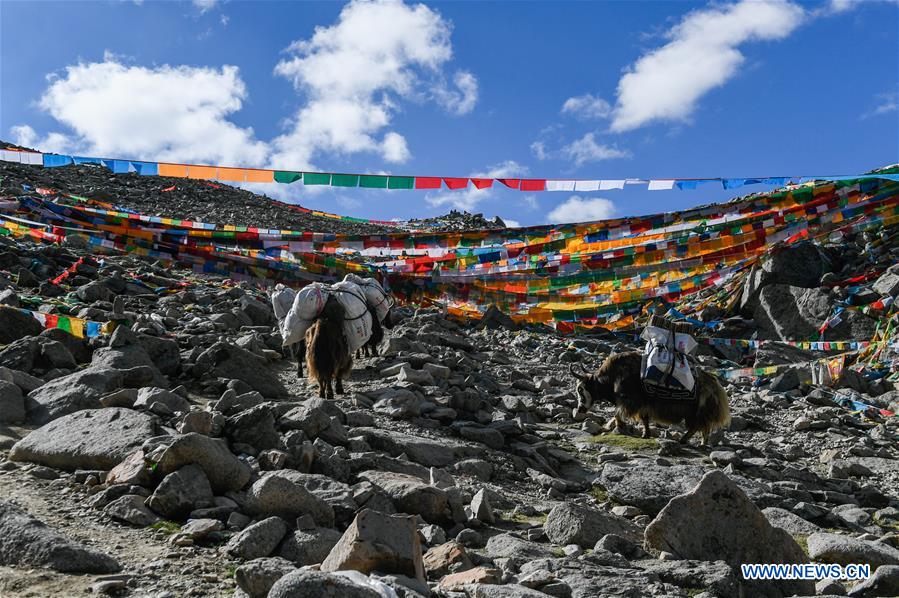
A yak team of Gangsha Village conveys travelling bags for pilgrims in Ali Prefecture, southwest China's Tibet Autonomous Region, June 25, 2018. Gangsha Village is located at the foot of Mount Kangrinboqe, a sacred Hindu and Buddhist site in Ali. Since the 1980s, local farmers and herdsmen have started to receive pilgrims and tourists from home and abroad. They upgraded services of tourism industry in the past 30 years, and tourism increased villagers' income. (Xinhua/Liu Dongjun)
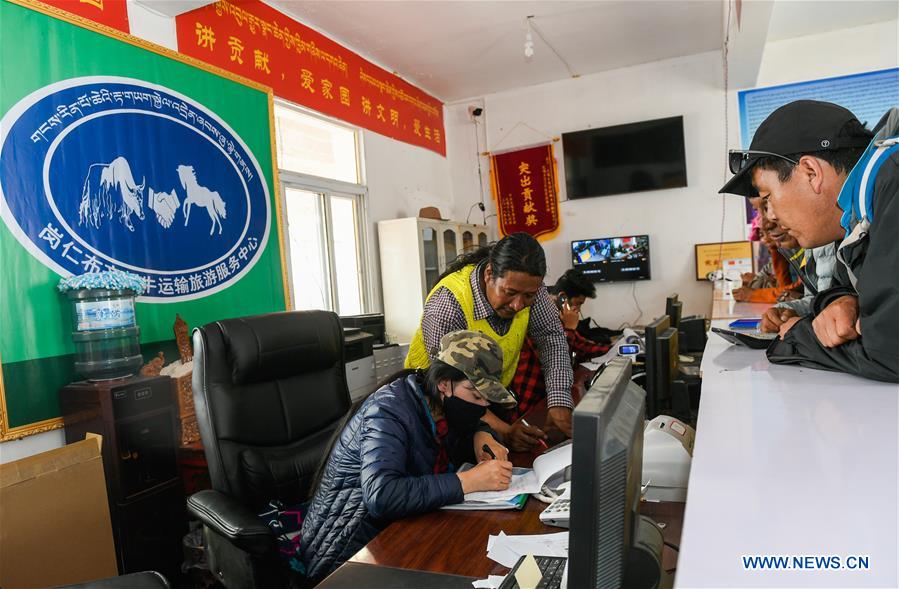
Staff member work at a service center for yak transportation in Ali Prefecture, southwest China's Tibet Autonomous Region, June 27, 2018. Gangsha Village is located at the foot of Mount Kangrinboqe, a sacred Hindu and Buddhist site in Ali. Since the 1980s, local farmers and herdsmen have started to receive pilgrims and tourists from home and abroad. They upgraded services of tourism industry in the past 30 years, and tourism increased villagers' income. (Xinhua/Liu Dongjun)
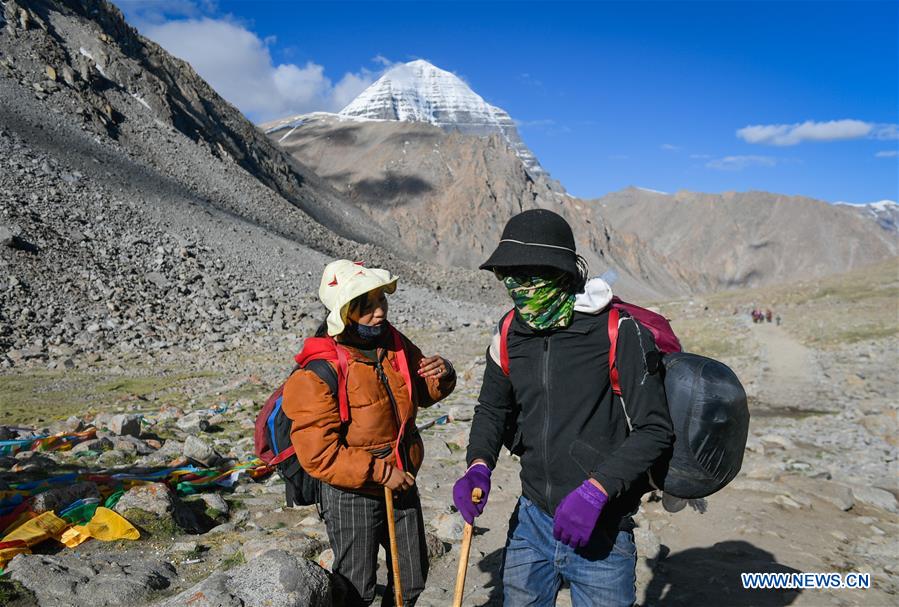
Villagers from Gangsha Village offer services to pilgrims in Ali Prefecture, southwest China's Tibet Autonomous Region, June 25, 2018. Gangsha Village is located at the foot of Mount Kangrinboqe, a sacred Hindu and Buddhist site in Ali. Since the 1980s, local farmers and herdsmen have started to receive pilgrims and tourists from home and abroad. They upgraded services of tourism industry in the past 30 years, and tourism increased villagers' income. (Xinhua/Liu Dongjun)
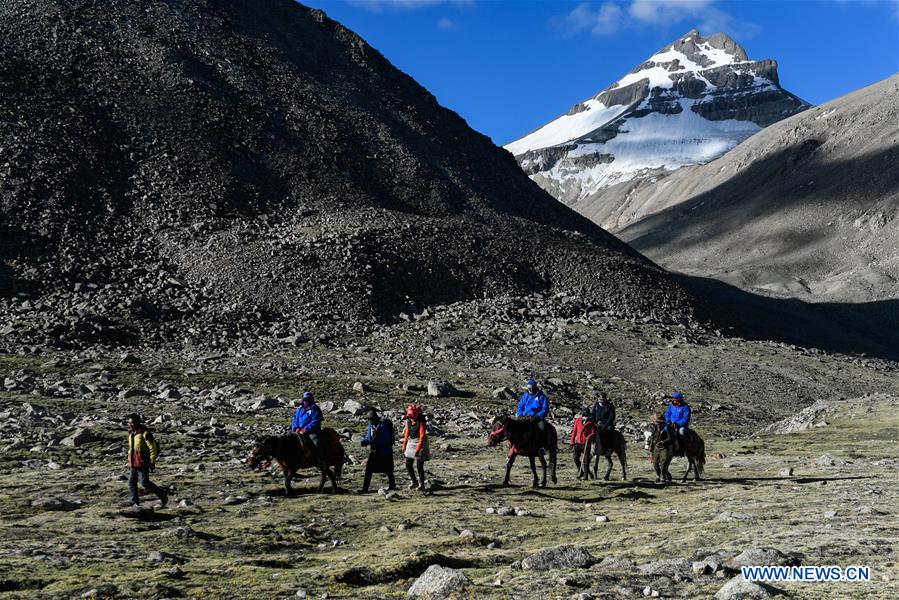
Indian pilgrims make a pilgrimage to Mount Kangrinboqe in Ali Prefecture, southwest China's Tibet Autonomous Region, June 25, 2018. Gangsha Village is located at the foot of Mount Kangrinboqe, a sacred Hindu and Buddhist site in Ali. Since the 1980s, local farmers and herdsmen have started to receive pilgrims and tourists from home and abroad. They upgraded services of tourism industry in the past 30 years, and tourism increased villagers' income. (Xinhua/Liu Dongjun)

A yak team of Gangsha Village conveys travelling bags for pilgrims in Ali Prefecture, southwest China's Tibet Autonomous Region, June 25, 2018. Gangsha Village is located at the foot of Mount Kangrinboqe, a sacred Hindu and Buddhist site in Ali. Since the 1980s, local farmers and herdsmen have started to receive pilgrims and tourists from home and abroad. They upgraded services of tourism industry in the past 30 years, and tourism increased villagers' income. (Xinhua/Liu Dongjun)

People of Gangsha Village wait for pilgrims at the starting of a travel to Mount Kangrinboqe in Ali Prefecture, southwest China's Tibet Autonomous Region, June 24, 2018. Gangsha Village is located at the foot of Mount Kangrinboqe, a sacred Hindu and Buddhist site in Ali. Since the 1980s, local farmers and herdsmen have started to receive pilgrims and tourists from home and abroad. They upgraded services of tourism industry in the past 30 years, and tourism increased villagers' income. (Xinhua/Liu Dongjun)
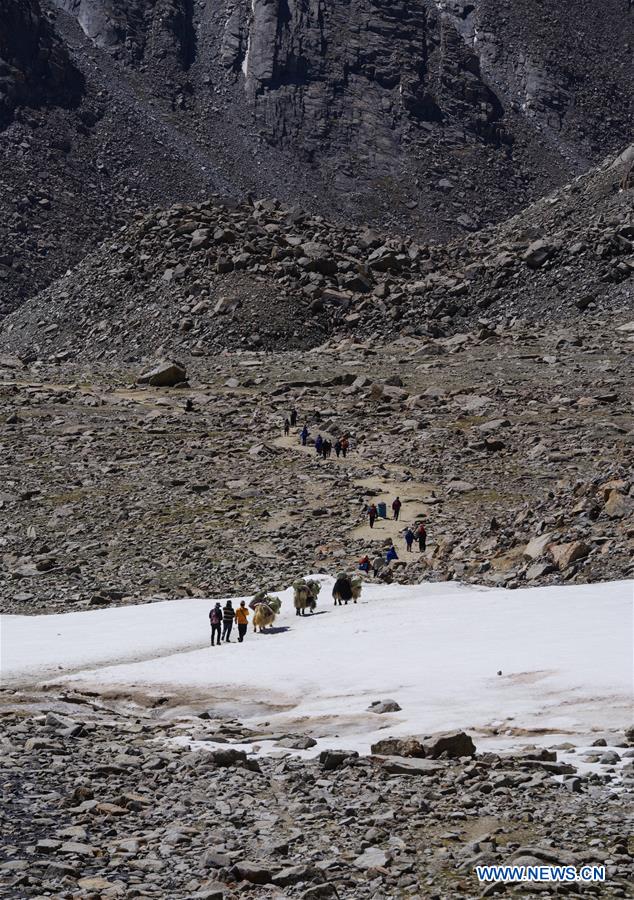
Indian pilgrims make a pilgrimage to Mount Kangrinboqe in Ali Prefecture, southwest China's Tibet Autonomous Region, June 25, 2018. Gangsha Village is located at the foot of Mount Kangrinboqe, a sacred Hindu and Buddhist site in Ali. Since the 1980s, local farmers and herdsmen have started to receive pilgrims and tourists from home and abroad. They upgraded services of tourism industry in the past 30 years, and tourism increased villagers' income. (Xinhua/Liu Dongjun)

A villager (C) from Gangsha Village offers services to a pilgrim in Ali Prefecture, southwest China's Tibet Autonomous Region, June 26, 2018. Gangsha Village is located at the foot of Mount Kangrinboqe, a sacred Hindu and Buddhist site in Ali. Since the 1980s, local farmers and herdsmen have started to receive pilgrims and tourists from home and abroad. They upgraded services of tourism industry in the past 30 years, and tourism increased villagers' income. (Xinhua/Liu Dongjun)

A yak team of Gangsha Village conveys travelling bags for pilgrims in Ali Prefecture, southwest China's Tibet Autonomous Region, June 26, 2018. Gangsha Village is located at the foot of Mount Kangrinboqe, a sacred Hindu and Buddhist site in Ali. Since the 1980s, local farmers and herdsmen have started to receive pilgrims and tourists from home and abroad. They upgraded services of tourism industry in the past 30 years, and tourism increased villagers' income. (Xinhua/Liu Dongjun)
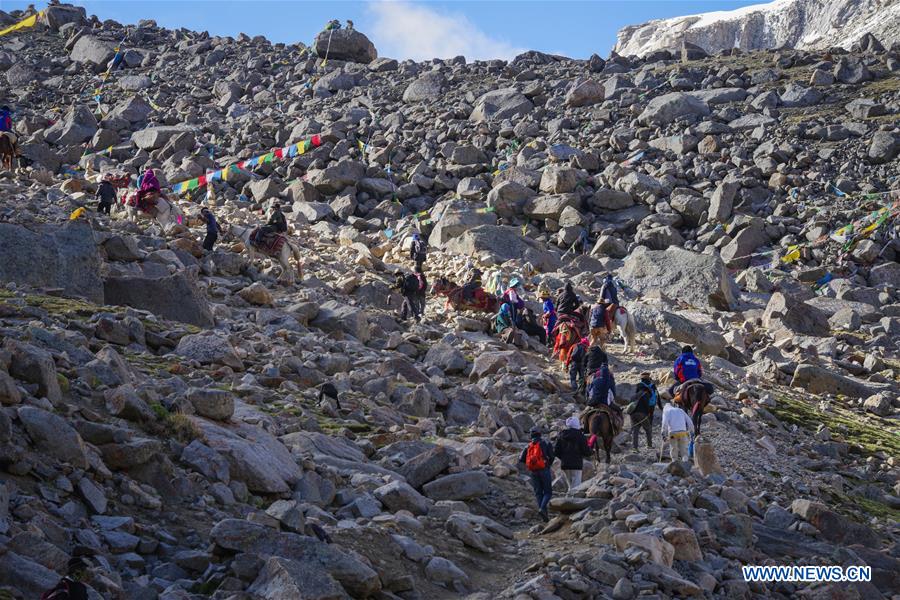
Indian pilgrims make a pilgrimage to Mount Kangrinboqe in Ali Prefecture, southwest China's Tibet Autonomous Region, June 25, 2018. Gangsha Village is located at the foot of Mount Kangrinboqe, a sacred Hindu and Buddhist site in Ali. Since the 1980s, local farmers and herdsmen have started to receive pilgrims and tourists from home and abroad. They upgraded services of tourism industry in the past 30 years, and tourism increased villagers' income.(Xinhua/Liu Dongjun)


